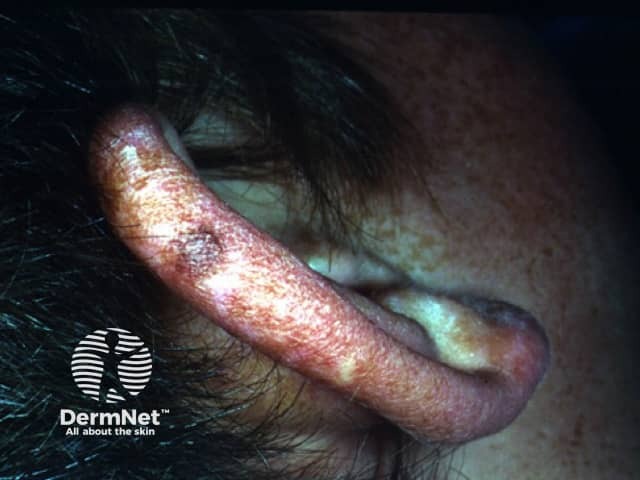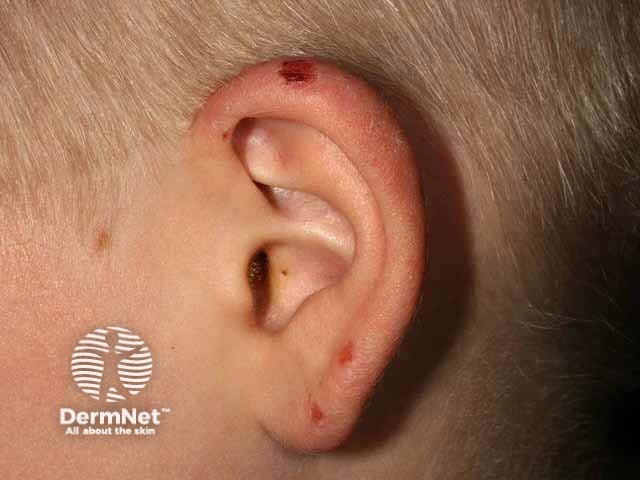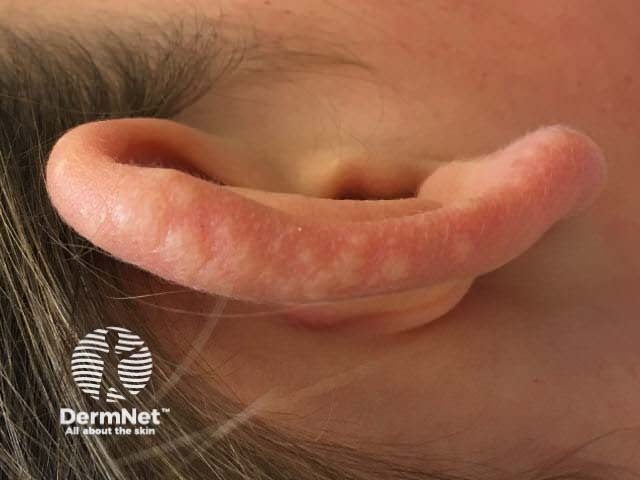Main menu
Common skin conditions

NEWS
Join DermNet PRO
Read more
Quick links
Juvenile spring eruption — extra information
What is juvenile spring eruption?
Juvenile spring eruption is a distinct sun-induced skin condition appearing on the light-exposed skin of the ears, usually in boys and young men in early spring.
What are the clinical features of juvenile spring eruption?
Boys and young men are more affected by juvenile spring eruption because they usually have less hair cover over the ears than girls and young women. Patients whose ears stick out are more susceptible. The eruption of juvenile spring eruption typically occurs in spring and consists of itchy red small lumps which evolve into blisters and crusts and heal with minimal or no scarring. Enlarged lymph nodes in the neck occur in some cases. The appearance of the rash is delayed 8–24 hours after sun exposure and heals in about 2 weeks, faster with treatment. Recurrences can occur, with similar climatic conditions.

Juvenile spring eruption

Juvenile spring eruption

Juvenile spring eruption
What is the cause of juvenile spring eruption?
Juvenile spring eruption is probably a localised form of polymorphic light eruption (PMLE) — a sun allergy rash of unknown cause which can have various appearances and affects more widespread areas of sun-exposed skin. Some patients with juvenile spring eruption also have PMLE. Cold weather, such as can occur in the spring, is also thought to play a part in juvenile spring eruption.
How is juvenile spring eruption diagnosed?
Juvenile spring eruption is usually diagnosed clinically and tests are not necessary.
What is the treatment of juvenile spring eruption?
The lesions of juvenile spring eruption are treated with potent topical steroids and emollients. Antihistamines may be prescribed for the itch. The ears should be protected from sun exposure.
To prevent recurrences of juvenile spring eruption, especially when climatic conditions are conducive, hats and sunscreens should be used. Hair can be grown over the ears.
References
- Alexander J Stratigos, MD, Christina Antoniou, MD, Pavlos Papadakis, MD, Apostolos Papapostolu MD, Dimitrios Sabatziotis, MD, Konstantia Tranaka, RN, Konstantina Tsara RN, Andreas D Katsambas MD. Athens, Greece. Juvenile spring eruption: Clinicopathologic features and phototesting results in 4 cases. J Am Acad Dermatol 2004; 50: no 2. S57-60. Medline.
On DermNet
